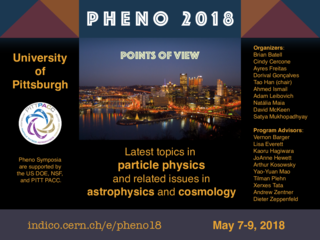Speaker
Description
We investigate the possibility of testing supergravity unified models with heavy scalar masses at the Large Hadron Collider. The analysis is carried out under the constraints that models produce the Higgs boson mass consistent with experiment and also produce dark matter consistent with WMAP and PLANCK experiments. A set of benchmarks in the supergravity parameter space are investigated using a combination of signal regions which are optimized for the model set. In the first part of the talk, we examine models with scalar masses in the 50-100 TeV mass range and light gaugino masses that are discoverable at LHC RUN II. Some benchmark models are found to be discoverable with an integrated luminosity as low as 100 fb$^{-1}$ to around 1000 fb$^{-1}$ and thus testable in the high luminosity era of the LHC, i.e., at HL-LHC. It is shown that scalar masses in the 50-100 TeV range but gaugino masses much lower in mass produce unification of gauge coupling constants, consistent with experimental data at low scale, with as good an accuracy (and sometimes even better) as models with low ($\mathcal{O}$(1) TeV) weak scale supersymmetry. Decay of the gravitinos for the supergravity model benchmarks are investigated and it is shown that they decay before the Big Bang Nucleosynthesis (BBN). Further, we investigate the non-thermal production of neutralinos from gravitino decay and it is found that the non-thermal contribution to the dark matter relic density is negligible relative to that from the thermal production of neutralinos for reheat temperature after inflation up to 10$^9$ GeV. In the second part of the talk, we investigate SUSY discovery potential at the HE-LHC, which is the proposed 28 TeV collider at CERN. A set of benchmarks are presented which are beyond the discovery potential of HL-LHC but are discoverable at HE-LHC. For comparison, we study model points at HE-LHC which are also discoverable at HL-LHC. The signatures pertaining to those benchmarks probe the production of electroweakinos and gluinos. For these model points, it is found that their discovery would require a HL-LHC run between 5-8 years while the same parameter points can be discovered in a period of few weeks to $\sim 1.5$ yr at HE-LHC running at its optimal luminosity of $2.5\times 10^{35}$ cm$^{−2}$ s$^{−1}$. The analysis indicates that the HE-LHC possibility should be seriously pursued as it would significantly increase the discovery reach for supersymmetry beyond that of HL-LHC and decrease the run period for discovery.
